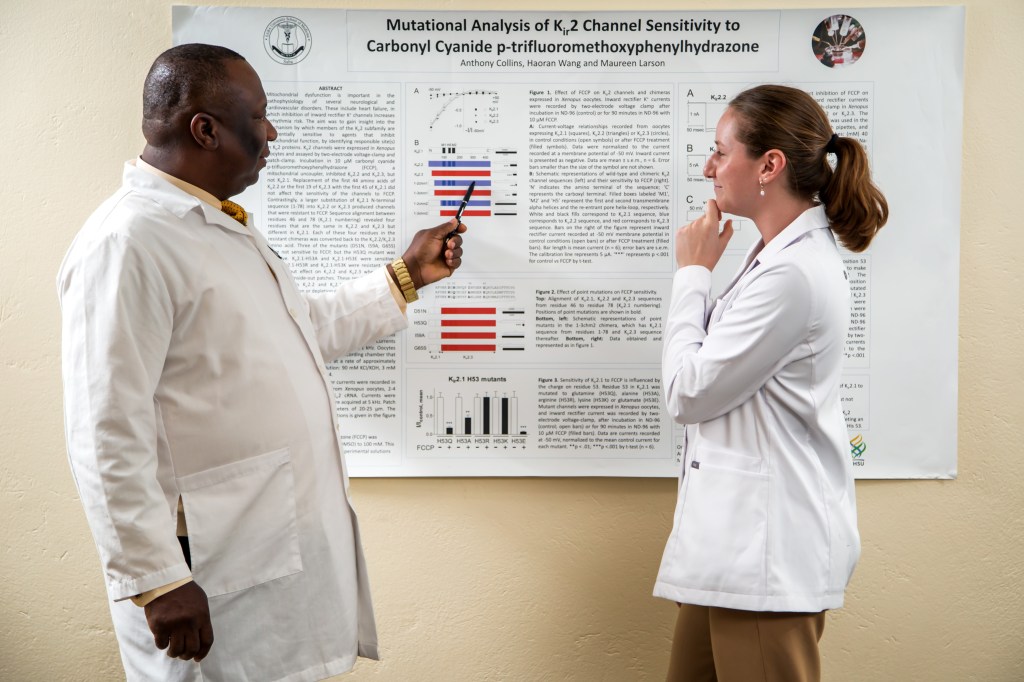
How to Prepare for the USMLE Step 1: A Complete Study Guide
Learn how to effectively prepare for the USMLE Step 1 with useful advice and proven strategies.
Gaining acceptance into an MD program marks a significant achievement, but it is still very early in your journey towards becoming a doctor. As you progress, you’ll encounter numerous milestones that will challenge your knowledge and skills.
Among these, the United States Medical Licensing Examination (USMLE) series of exams stands out as pivotal checkpoints that you must clear to progress through your medical education and obtain your license to practice. This U.S. licensing exam is divided into three parts, with the first two occurring during medical school, and the third occurring during your post-medical school residency.
Performing well on each USMLE step exam is very important because your results greatly influence your ability to successfully progress from Basic Sciences to Clinical Medicine (in medical school) and then secure a residency after graduation. Given the weight of these assessments, thorough preparation is essential in order to ensure you perform well.
Keep reading to explore effective strategies for studying and preparing for the USMLE Step 1, which will help ensure you achieve success throughout your medical career journey.
What Is the USMLE Step 1?
The USMLE Step 1 evaluates a medical student’s understanding of the principles and mechanisms underlying health, disease and modes of therapy, as well as their ability to synthesize and apply important concepts to the practice of medicine.
The examination spans eight hours, divided into one break and seven 60-minute testing blocks that contain approximately 40 questions each, for a total of 280 questions.
The content reflects subjects covered during the initial two years of medical school (the Basic Sciences portion). Step 1 is graded on a pass/fail basis.
When Do You Take USMLE Step 1?
Medical students will typically take USMLE Step 1 at the end of their second year, once they’ve successfully completed their Basic Sciences semesters. You should register for the test six months before your desired test date to ensure you get the date and location you want.
How Long is the USMLE Step 1 Exam?
The USMLE Step 1 is a multiple-choice exam administered at Prometric centers. It is made up of 280 multiple-choice questions, divided into seven 60-minute blocks. The number of questions per block can differ, but will never exceed 40. Including breaks, the USMLE Step 1 exam takes 8 hours to complete and is administered in a single day.
If you suffer from a physical or mental health condition, you can apply for additional break time by filling out a request form with a letter reporting the medical condition from a medical professional. This request should be made before or during the registration for the exam.
Interested in Learning More?
Contact our expert admissions team to ask any questions you may have and gain valuable guidance.
How to Study for the USMLE Step 1
Here are some tips to help you study for your USMLE Step 1 exam:
Get advice from faculty
Consistently engage with your medical school faculty members to gain insights into the content likely to be featured on the USMLE Step 1 exam, especially for content that you do not fully understand or feel comfortable with. Given their experience, they have likely encountered previous exam formats and can offer guidance on the topics with a higher probability of appearing. Additionally, they can provide direction on prioritizing essential information within their respective fields and discerning what may be less critical for your study focus.
Study test materials
One of the most beneficial ways to prepare for your USMLE is to test yourself with practice exam papers. The National Board of Medical Examiners (NBME) offers a range of USMLE Step 1 practice exams. These practice exams serve multiple purposes: they familiarize you with the exam’s structure, providing insight into what to expect; they simulate the real exam experience; and they help identify any knowledge gaps, guiding your focus for further study. It’s worth noting, however, that these resources may not comprehensively cover all exam sections, as new topics are regularly introduced each year.
Avoid only studying the last exam papers
The content of the USMLE exam evolves annually, meaning that relying solely on studying previous years’ exam papers and expecting similarities with your own is not advisable. However, studying previous exam papers remains a useful study tactic when integrated into a more broadly comprehensive study plan.
Learn basic terms and definitions
Building your core vocabulary is essential to becoming a successful medical student and preparing you for your USMLE Step 1 exam. By learning key terms and definitions, you’ll be able to understand the content you are tested on, even if it’s simply memorization and recognition for your USMLE Step 1.
Learn central concepts
A significant portion of your study efforts should be directed towards mastering the core concepts within each of the seven main subject areas: anatomy, physiology, biochemistry, microbiology, immunology, pathology and pharmacology. This involves developing a comprehensive understanding of the concepts and their applications, and establishing connections with related concepts.
Use resources that match your style of learning
As you begin preparing for the USMLE Step 1, you’ll likely come across recommendations for numerous books, resources and study schedules. However, there isn’t a one-size-fits-all USMLE study method that works for every medical student. Given your individual learning style, it’s essential to discover the approach that best facilitates your absorption of new information. For example, some students excel through independent study, while others thrive in peer study groups for effective exam preparation.
Stay on track academically
Since the USMLE Step 1 draws heavily from the content covered in the initial two years of medical school, your academic achievements serve as a reliable gauge of your comprehension. Monitor your grades and classroom performance closely. If you encounter challenges with any topics or concepts that negatively impact your academic results, it’s imperative to address these gaps well in advance of your USMLE Step 1 testing date.
Start studying early
Students typically take the USMLE Step 1 towards the end of their second year of medical school. However, it’s best to start preparing early due to the substantial time investment required for effective study. This exam demands a thorough understanding of extensive information and the ability to apply this knowledge, making last-minute cramming ineffective.
Creating Your USMLE Step 1 Study Schedule
While there’s no magic formula for succeeding in the USMLE Step 1 exam, you can give yourself the best chance at success by creating an efficient study schedule.
The recommended study length is starting at least 6-8 weeks in advance of your test date and tackling at least 80 questions a day. You should also look to do a few more questions a day to address incorrect questions a second time.



USMLE Study Tips
As you prepare for your USMLE Step 1, remember that with each subject area, you must be able to identify concepts, recognize their importance and apply them in given situations.
Here are five additional study tips to help you prepare for your first USMLE exam:
- Maintain organization: Establish a practical study schedule that you can adhere to consistently. Ensure balanced coverage across all areas without dwelling excessively on one topic or neglecting any. Remember to incorporate regular breaks into your schedule.
- Pinpoint weak areas: Utilize practice tests, past exam papers and performance feedback to pinpoint your weakest areas. Tailor your study plan to focus on these topics for improvement.
- Focus on integration: Given the USMLE Step 1’s emphasis on integrating Basic Sciences topics, consider studying related subjects together or by organ system to foster a deeper understanding of their interconnectedness.
- Optimize study sessions: Keep study sessions brief, aiming for 60 to 90 minutes each with at least a 10-minute break in between. Prolonged study periods can diminish concentration, so shorter, focused sessions are more effective.
- Streamline information sources: Select one primary review text for each subject area to serve as your main resource. Additional books can be used selectively for clarification or reinforcement.
How Many Times Can You Take the USMLE Step 1?
If you are unsuccessful during your initial USMLE Step 1 exam, the good news is that you have a lifetime maximum of four attempts. However, you can only take the exam up to three times during a 12-month period. Your fourth attempt must be at least 12 months after your first attempt, and at least six months after your most recent attempt.
USMLE as the Gateway for U.S. Medical Students
The USMLE Step 1 is a critical gateway for U.S. medical students who plan to practice back home. It can impact med school progression, set the foundation for future exams and influence residency eligibility. Both U.S. and Caribbean medical students must succeed on all USMLE step exams in order to be eligible for practice in the United States.
Saba University School of Medicine’s Approach to Step 1
At Saba University School of Medicine (SUSOM), we are committed to helping our MD program students achieve success on the USMLE. Step 1. Preparation is built into the MD program curriculum and emphasized throughout your time in Basic Sciences (semesters 1-5 of the 10-semester MD program).
Our knowledgeable faculty members consistently deliver individualized support to help ensure you are comfortable with essential concepts and progressing effectively through your classes. We also offer a variety of impactful Student Support Services to help you develop study techniques and strategies that will help you succeed in medical school examinations and the USMLE tests.
To learn more about how SUSOM supports students and fosters success, view this testimonial video from a practicing graduate in the United States:
Get in touch with us to learn more about our 4-year MD program or how you can apply to kick-start a rewarding career in medicine.
You can also check out our events and webinars for more information about studying with us.
FAQs About the USMLE Step 1
SUSOM MD program students take the USMLE Step 1 once they successfully complete their Basic Sciences training. It is an essential part of the curriculum and necessary for advancement into the Clinical Medicine program (semesters 6-10 of the MD program).
All U.S. students can take the USMLE Step 1 after studying at a Caribbean medical school, provided that the school is listed in the World Directory of Medical Schools and meets eligibility requirements.
USMLE Step 1 uses a pass/fail system. On a three-digit scale, a passing score for the USMLE Step 1 is 196.
The USMLE Step 1 is mentally demanding and requires extensive study covering a wide range of Basic Sciences topics. However, studying at Saba University School of Medicine will give you everything you need to prepare effectively and pass the exam.
A good resource for USMLE Step 1 preparation is the “UFAPS” suite: UWorld for practice questions, First Aid for a high-yield review book, Anki (specifically the Anking deck) for flashcards, and Pathoma for pathology videos and text.

For Prospective Students
SUSOM is committed to supporting prospective students throughout the admissions process. Please click the following links for detailed information about each topic: